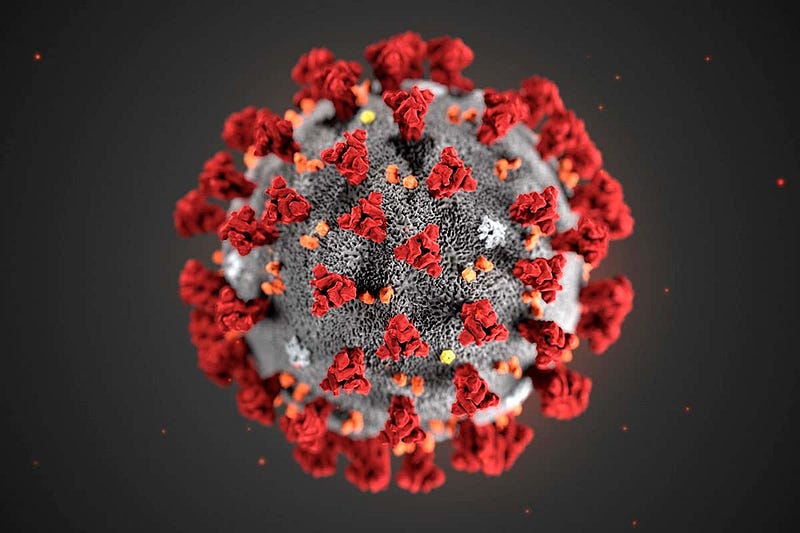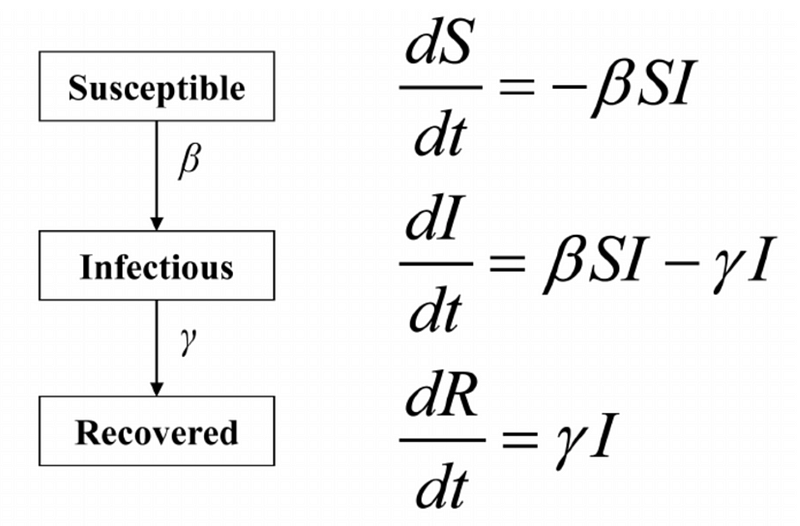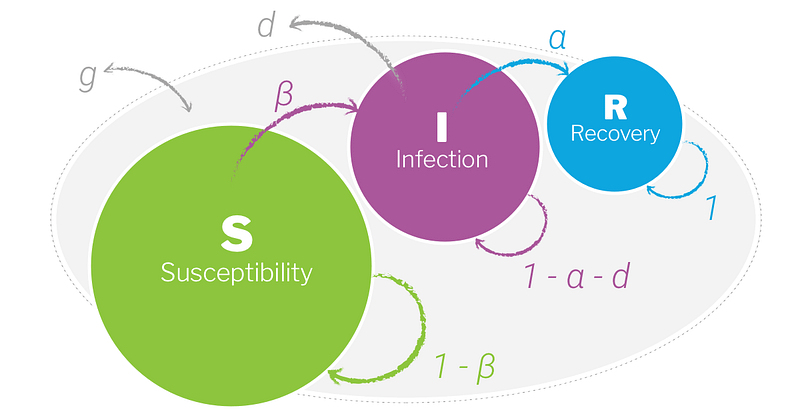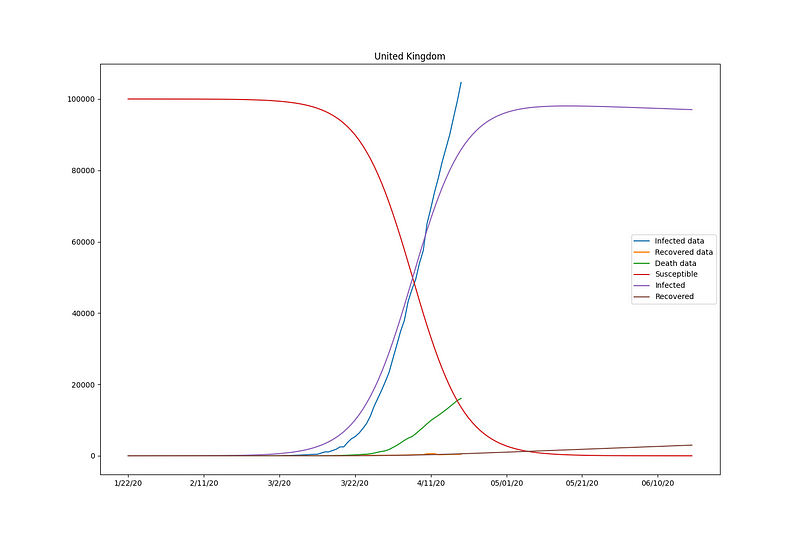Because of the Lateness in Testing, Is The UK Shooting In The Dark on COVID-19?

Test, Test and Test: Understanding COVID-19?
The world is saying “test, test, test”. So why should we test? Well, apart from finding out those that may need help, we also need to understand how much of the population is infected at any time, and use this to understand the spread (and decay) of the virus. Without this we are basically seeing a lag of many weeks (or months), and where it will be too late to understand how the virus is spreading. Without testing, our model simply becomes counting those who have sadly died and then trying to work backwards.
Overall I have found the data available on COVID-19 rather weak from a scientific point of view. But Kai Sasaki is one researcher who has implemented an SIR (Susceptible, Infection and Recovered) model. It is focuses on the Kermack-McKendrick model and which was proposed in 1927, and then re-defined in 1979 [here]:

The SIR model aims to identify those who are susceptible to a disease, those who are infectious, and then those who have recovered. Basically it measures the rate at which those are are susceptible to become infectious (β), and the rate at which those who are infectious actually recover (γ):

An interesting way to view this is, where the rate at which we move from S to I is β, and the rate from I to R is γ:

This then leads to an SIR graph, and which shows that from a single infection we move from initially being susceptible, towards a majority being infection (the case below this happens around Day 20), and then where the majority are recovered:

A key factor is this to understand the average number of days to recover from the infection, and which can be calculated as:
D=1/γ
And the basic reproduction number (the average number of people infected by one person) as:
R0=β/γ
If this value is high, there is a large chance of there being a pandemic. If we can get the value less than unity, the outbreak will eventually reduce in its scope. It can be used to estimate the herd immune threshold (HIT), and which is the number of people that must be infected before we reach an R0 which is less than unity. This is either done by allowing the virus to spread (as the UK initially focused on) or with immunisation.
I will use the code from here, and which uses the minimize() function in scipy to estimate rates:
A good deal of this depends on getting good data. In South Korea we see the tests occurring (blue line) before the recovery data starts to drop (red line). The nation was thus able to turn the curve (the purple line) within January 2020:

For China, we see a sign of the infected data reaching at peak around the end of January 2020:

For Italy, we see hope and where the turning point for those recovering happens before 11 April 2020 [here]:

For France, we see the susceptible line drops around 2 March 2020, and where we see a turning point around 11 April 2020:

In France, we see the testing (the blue line) has happened before the recovered data starts to significantly turn. With Germany, too, we see a turning point within those infected (the purple line), and which happens before 11 April 2020:

For the UK, there has been a relatively weak collection of data for testing, and where it has been slow to start. The predictions are difficult to compute, and where there is no sight of a significant turning point (the purple line):

In terms of the results for R0, we gain the results of:
- China: beta=0.00000542, gamma=0.03085501, r_0:0.00017581
- Italy: beta=0.00000195, gamma=0.02432812, r_0:0.00008022
- UK: beta=0.00000144, gamma=0.00041085, r_0:0.00351225
The UK factor for R0 is nearly 43 times higher than Italy, and 20 times higher than China.
Conclusions
The UK was perhaps too late to test at scale. Without this data, it will be difficult to know where the turning point of the spread of the virus. Every extra day that we have a lock-down, and without knowing a way out, we will risk our economic future.
We need testing, and we need data!